by Briscoe White | Jan 6, 2012 | Herbs, Miscellaneous, Recipes |
Missing the taste of fresh herbs from your garden already? Our third resolution for our herb garden is to savor the flavor! By that I mean, harvest and preserve your herbs to enjoy them throughout the year in your favorite recipes. Dry your herbs for soothing medicinal teas or preserve your culinary herbs in butter for a seemingly gourmet trimming for your table. The possibilities for your herbs are just as boundless as the ways to preserve them!
3. Harvest and Preserve
For the best techniques on harvesting your herbs, here are some things to remember:
- Harvest often once your herbs are established, which will encourage overall healthier growth.
- Make sure to gather herbs in the early morning after the dew has dried and the sun is less intense, for the least amount of stress to your plants.
- When harvesting, use a clean pair of scissors for a fresh cut, and for best flavor, pick foliage before the plant begins to flower. (You can prolong this harvesting period by deadheading your herbs.)
- You can harvest annuals, like Basil, right up until you see frost, but it’s best to stop pruning perennials like Rosemary about a month before the ground freezes, as trimming them late in the season may make them too tender to withstand winter.
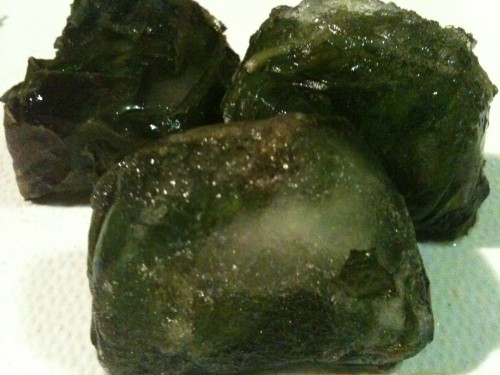
Preserve your herbs, like Basil, by freezing it into cubes!
When it comes to preserving your herbs, you can freeze them, dry them, add them to vinegar or oil, or create herb butters. When drying, make sure to wash your herbs thoroughly, and hang them in a loose bunch in a cool, dark area to dry. They need good, non-humid air circulation to dry without rotting, and keeping them in the dark helps to preserve their natural oils. Herbs like Basil are easily chopped and frozen in ice cube trays for easy storage, while herbs like Stevia can be easily rendered and the sweet extract can be preserved in the fridge for use in desserts or tea.
By preserving your garden, you can appreciate its wonderfully fresh flavors well into the winter months. A wonderfully simple but powerful way to enhance a dish, using your own herbs will also prevent you from buying overpriced, out of season plants or cuttings in the grocery store. By incorporating your garden into your everyday life, you’ll be surprised at your constant return on investment. With our resolutions for your 2012 garden, you’ll stay healthier by infusing your diet with vitamin and mineral-rich herbs, and you’ll save money by preserving your bounty for the year to come. Try creating some of your own garden resolutions for this coming year and experience the joy and satisfaction of a more sustainable lifestyle.
by Briscoe White | Jan 4, 2012 | Gardening, Growing, Herbs, Life on the Farm |
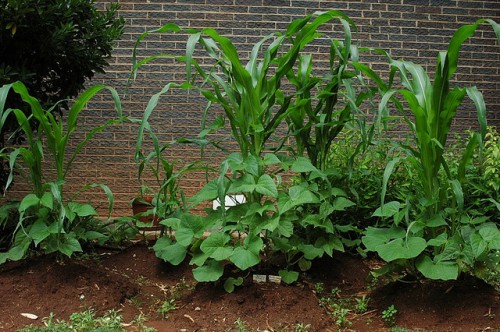
Continuing to think about the New Year and my many resolutions conjures thoughts of good friends and the value of friendship. Just as we appreciate the help of a good friend when we’re feeling weak, your plants have the same needs. Companion planting has always been a fascinating subject to me and the way that certain herbs can protect, encourage and improve the health of their neighbors is really pretty interesting stuff. My second goal for 2012 is to use the science of companion planting more when planning what to grow, for smarter gardening. You have probably heard about The Three Sisters, a companion planting technique devised by Native Americans to efficiently grow corn, beans and squash, by allowing each plant to help the others by sharing their resources. Think about the way plants interact with each other in the garden while you’re planning, and make this concept do the hard work for you this year!
2. Companion Planting
Many of the herbs and flowers that you may already be familiar with have specific qualities that can either encourage or even harm neighboring plants. Companion planting can help prevent pest and insect infestation, attract beneficial pollinators, amend the soil with healthy nutrients and encourage better growth, and break up tough soil so that nearby root systems can dig deeper for more moisture. Plants like Achillea, which adds nutrients to the soil and is commonly called “All Heal” because of its medicinal affect on ailing plants nearby, and Comfrey, a great soil amendment and compost activator that can be made into a nutrient-rich compost tea for fertilizing your plants, make wonderful companion plants because they give back to the garden. Borage and Nasturtiums deter a multitude of crop damaging pests, by attracting predatory insects that prey on these harmful buggers. Herbs like Chamomile, when grown next to other aromatic or culinary herbs, will help increase their oil production, making them more fragrant and flavorful.
By planting smarter, you’ll save yourself lots of work and reap a larger bounty from your garden! For a great diagram and more information on Companion Planting, read our previous blog, Companion Plants Are Friends Til The End! Tune in to Briscoe’s Seeds For Thought tomorrow, for our third and last goal for 2012, Herb Gardening Resolutions, Part 3: Savor The Flavor.
by Briscoe White | Jan 3, 2012 | Basics, Gardening, Growing, Herbs, Inspiration, Miscellaneous |
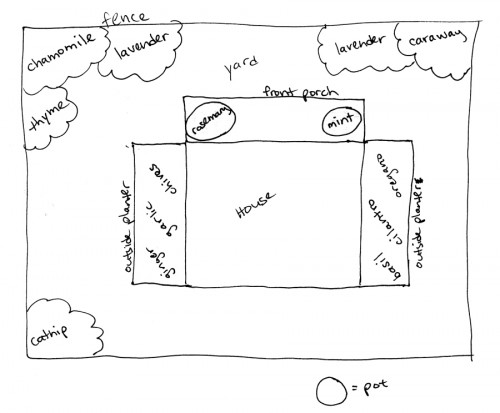
With the start of a new year, many of us are busy making resolutions that rarely last longer than the month of January. This year, in addition to the usual promises to save money, eat healthier and get more exercise, don’t forget to make resolutions for your garden. (Simply resolving to get outside and grow more this year will help satisfy those previously mentioned promises!) By investing your time into growing your own herbs and edibles and working hard to keep your garden successful, you’ll end up healthier, more fit and you’ll save some green by going green. Our blog series of three herb gardening resolutions will make keeping your other intentions for 2012 much easier and make sustainability more satisfying!
1. Plan Ahead
While we’re in the grips of winter and it’s too cold to garden outside, make the best use of this time by planning your spring garden! Being prepared is the best weapon in your gardening arsenal and doing a little research now will ensure for a more bountiful garden later. Make sure to determine what purpose your garden has, whether it may be for cooking, to attract wildlife, or to heal yourself from home. Once you’ve narrowed down how your garden will function, you can determine what and where to plant within its borders.
Purpose determines placement! For a culinary herb garden, you may want to plot a spot near your back door to keep fresh herbs just within arm’s reach for your favorite recipe. Where ever you decide to place your garden, whether you have boundless acres or a beautiful balcony, make sure that you get plenty of light, and you have fertile, well-draining soil for planting. You can also start indoor potted herb gardens over the winter to be transplanted into your outdoor space once the weather warms up. This will give you an early crop of your favorite spring herbs or veggies, and it’s a great project to keep you gardening over the winter.
While you’re stuck inside and curled up by the fire this winter, create a gardening journal to organize your thoughts. Jot down ideas, track the amount of sunlight each part of the garden gets, record interesting new plants and creative uses while you’re dreaming of spring, so you don’t forget these inspirations when spring hits.Sketch your plans for your garden and label where you’d like your plants to go. Drawing your garden out before breaking ground really helps, as it is much easier to erase a plant that doesn’t fit, than to dig it back up and transplant.
Just a little forethought really goes a long way, and a good garden depends on a thoughtful gardener. Stay tuned tomorrow for Part 2 of our 2012 Herb Garden Resolutions Series, when we discuss Companion Planting!
by Briscoe White | Dec 19, 2011 | Inspiration, Life on the Farm, Miscellaneous, Wildlife |
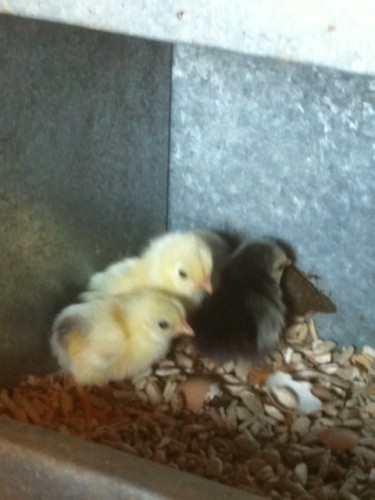
This time of year always feels magical to me- as if anything is possible. You can just feel it in the air- all of the goodwill, warm spirits and excitement- it feels like being a kid again, when everything felt full of wonder. I felt that same wonder when I walked into our chicken coop to gather eggs, and I found seven fuzzy little presents tucked below our two Columbian Rock hens. Though well out of season for hatching chicks, these two white and black hens have been anxiously sharing a nest, a process we call “dumping”. The two laid in the same nest, taking turns keeping the eggs warm. In warmer months when laying is more common, this can actually kill the chicks, as they get too warm with the dual body heat, but since we’ve been getting so cold at night here in zone 7, it was necessary for the chicks’ survival.
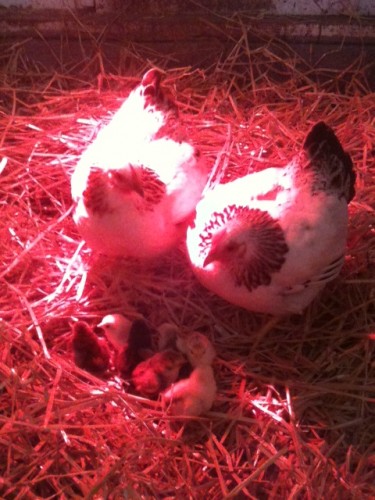
We leave the lights on in the coop at night to reschedule the hens’ natural cycle, encouraging them to lay eggs throughout the winter. When daylight hours begin to shorten, leaving the lights on for longer periods of time will stimulate the hens’ pituitary glands and trick them into continuously laying eggs. This doesn’t harm the chickens, and we get to enjoy fresh eggs all year round! Though this was a man-made miracle, we were still in awe that these little guys had hatched. I guess it was only a matter of time before our plucky little rooster was able to woo these two ladies, resulting in our newest little additions. I guess you just can’t stop nature’s agenda!
We love the Columbian Rocks because of their beautiful markings and small stature. Though we know we should have kept a closer eye on our randy rooster, the chicks will have a warm home in our brood house, which is filled with straw and heat lamps to keep them nice and cozy. Both mothers and the seven chicks are all doing great and enjoying all of the warmth and attention.
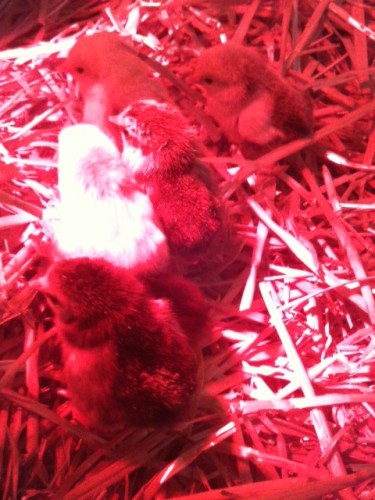
We hope that this season holds all of the awe and wonder for you and yours, that we felt upon finding these little guys this morning. I think that’s one of the best parts of this time of year, the childlike wonder that we all recall that allows us to pause and appreciate family and friends. From all of us to all of you, we hope you have a wonderfully warm holiday season, and keep your eyes open for everyday wonder!
by Briscoe White | Dec 9, 2011 | Gardening, Growing, Herbs, Life on the Farm |
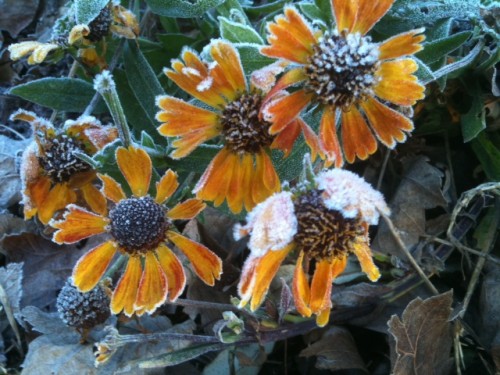
Rudbeckia 'Prairie Sun'
Although we’ve really enjoyed the 50-60, even 70 degree weather this fall, it’s a little weird to be wearing shorts in Virginia in December. Last night was one of the first real reminders of what we’re in for this winter, a hard frost. Though scraping your windshields in the morning can be quite a pain, the delicate, cold crystals really made our herb test garden glitter this morning. So, good bye short sleeves and screen doors, we’ll pack you away until mid March. Hello, long johns and indoor herb gardening!
Here are a few pictures of our garden this morning, all covered in frost. It was quite a beautiful sight!
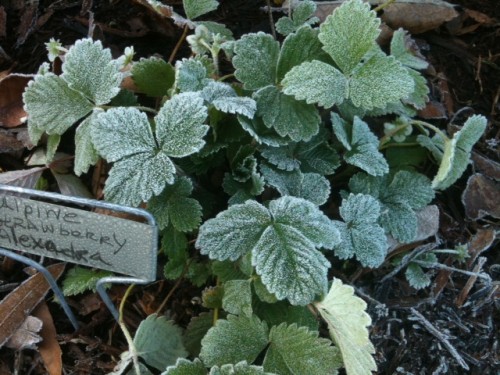
Alpine Strawberry
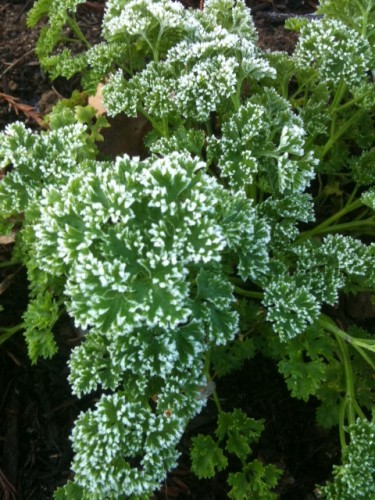
'Curly' Parsley
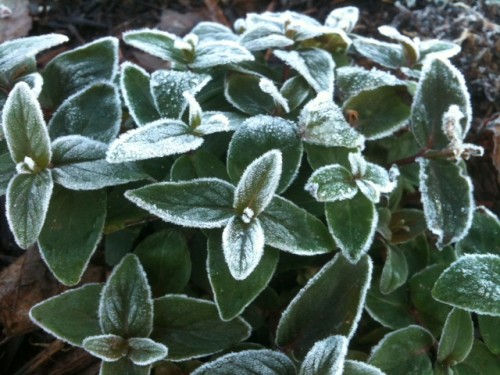
Mountain Mint
by Briscoe White | Dec 1, 2011 | Flowers, Gardening, Growing, Herbs, Life on the Farm |
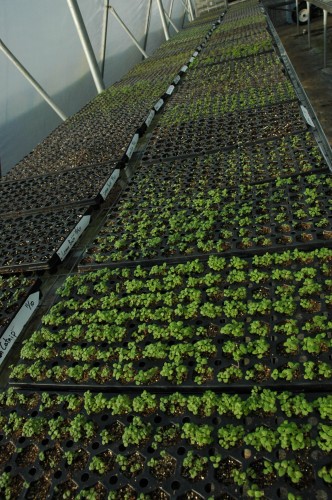
While everyone is running around finishing holiday shopping, we’re busier than Santa’s elves in our greenhouse. Introducing a few new techniques and tricks of the trade, we’ve been hard at work planting and preparing our herbs and flowers for their debut this spring. Hand-planted and all grown in our greenhouse, we get to know the different personalities of these plants like old friends. For instance,we know that though aromatic and beautiful, Lavender can be cranky about too much water. Or that Horehound, a medicinal herb and cousin to Mint, is easy going and grows quickly. Knowing our plants from the time they germinate allows us to have the best quality control over what we sell, and we have high standards for our plants because if we wouldn’t want it in our own garden, we won’t ship it. This is the benefit to a family-owned nursery versus a big box store or corporate grower. We care about the plants we grow. Like an anxious, proud papa, I eagerly check the germination chamber constantly each week to see if any “due dates” have arrived early.
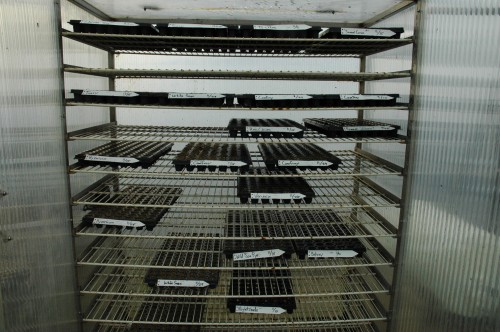
Looks like some of the first Betony seeds are beginning to sprout!
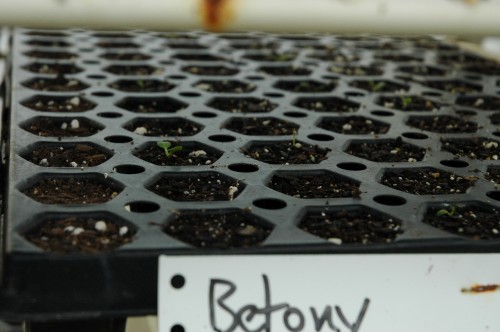
Stay posted for more pictures and news on how your favorite herbs and flowers are growing! You can actually watch the progress of your order, from their inception in our greenhouse, to their maturity in your garden. Order these babies now and reserve yours for spring shipping, because the early bird does get the worm!













